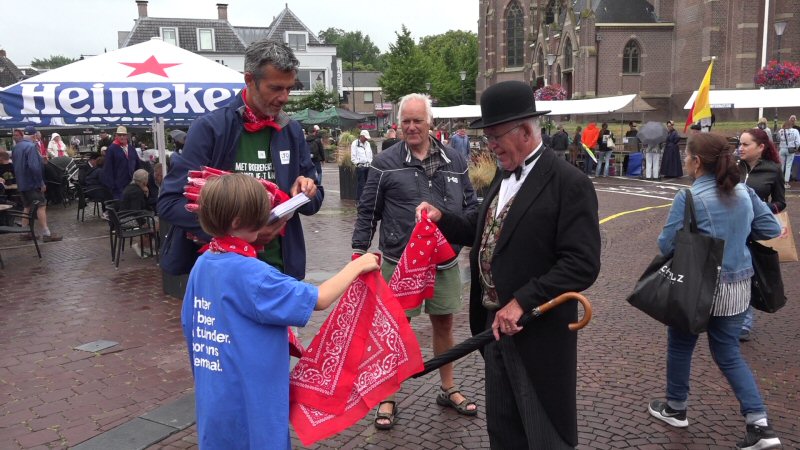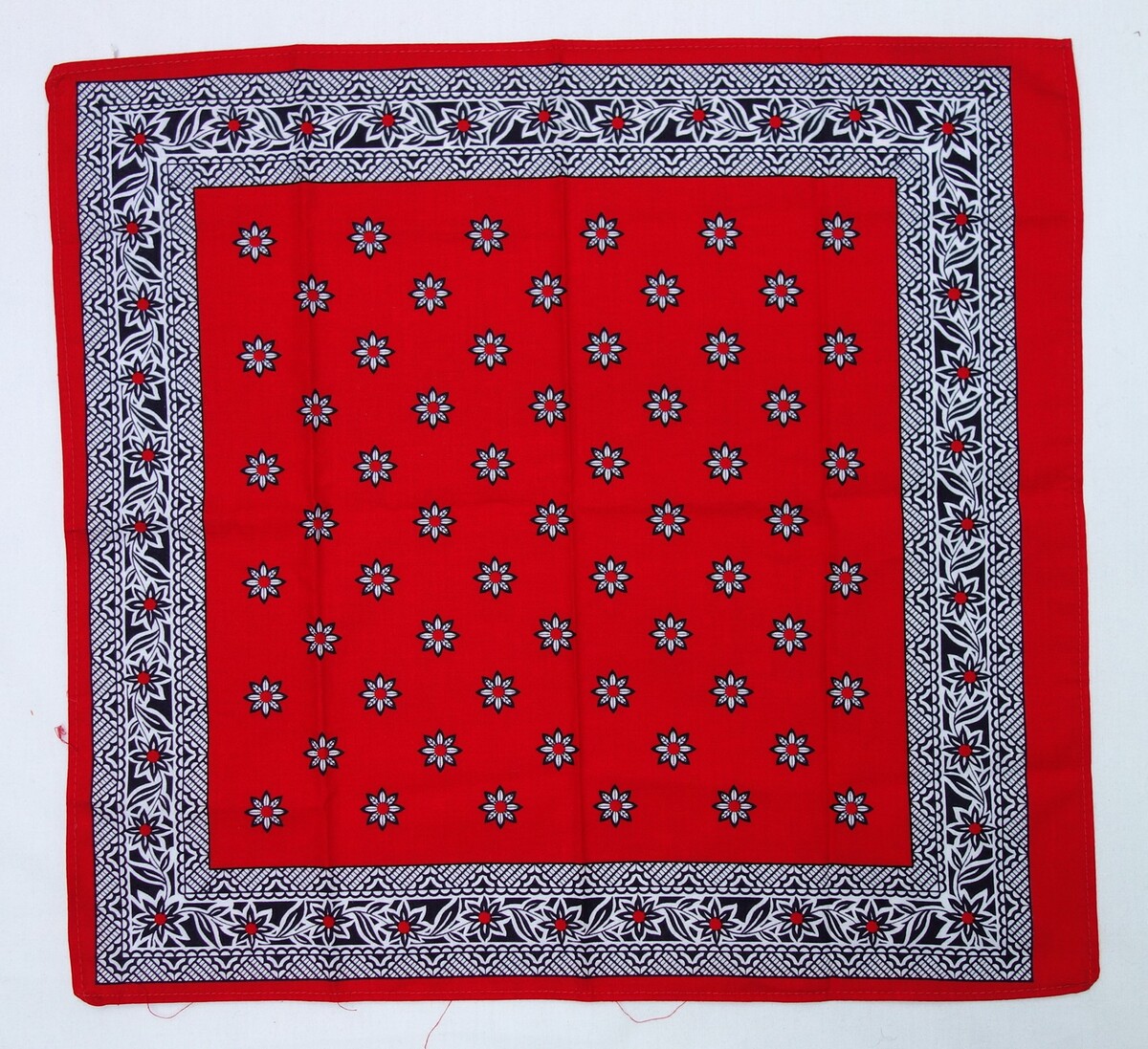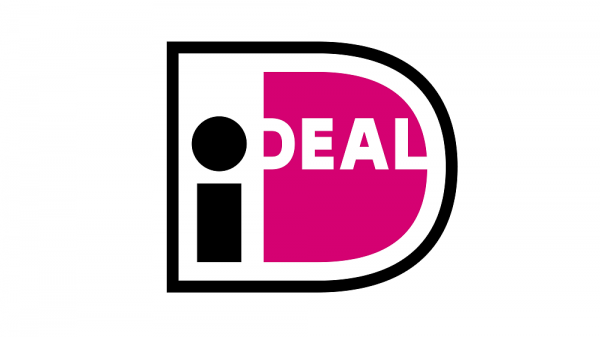 The Dutch flag, red-white-blue, hanging upside down just outside of Leiderdorp, 1 August 2022 (photograph Willem Vogelsang).The TRC Collection includes a somewhat banal, typical farmer's kerchief from the Netherlands (TRC 2019.1998). Such cloths have always been linked to the Dutch countryside. They are used as handkerchiefs, cloths to contain all sorts of goods, and also to affix to objects that may cause accidents, such as long protruding bars or pipes loaded onto a truck. But for the last few weeks they have taken a very different role, namely as a symbol of protest.
The Dutch flag, red-white-blue, hanging upside down just outside of Leiderdorp, 1 August 2022 (photograph Willem Vogelsang).The TRC Collection includes a somewhat banal, typical farmer's kerchief from the Netherlands (TRC 2019.1998). Such cloths have always been linked to the Dutch countryside. They are used as handkerchiefs, cloths to contain all sorts of goods, and also to affix to objects that may cause accidents, such as long protruding bars or pipes loaded onto a truck. But for the last few weeks they have taken a very different role, namely as a symbol of protest.
For hundreds of years many people have used textiles and garments as a symbol of protest. Just think of the purple/green of the women’s suffragette movement in Britain the early 20th century, the white garments and the hand spinning of cotton (TRC 2021.2619) associated with Mahatma Gandhi in India in the 1940s, or the wearing of red, white and blue garments and accessories during the Second World War and the German occupation of the Netherlands (TRC 2020.3711).

We can also point at the use of traditional, sal sepik outfit (1998.0284a and TRC 1998.0284b) currently worn by some Kurdish men in parts of Turkey and Iran.
An example of textiles used for sending a silent, yet very loud, message is taking place in the Netherlands at this very moment. During the last few weeks more and more Dutch flags can be seen throughout the Netherlands hanging from street lights, motorway bridges, as well as tractors and bales of hay. Why?

The flags are part of the farmers' (boeren) protest against the nitrogen (stikstof) regulations that the Dutch government is trying to impose in order to help reduce climate change. Many farmers are angry over the proposed loss of farms, animals, income, and their children’s future.
So there have been protests (some peaceful, some violent, and others simply dangerous) throughout the country. One specific feature of this protest is the hoisting of the Dutch flag (red-white-blue) upside down, so the blue stripe is on the top rather than at the bottom.
 Red farmer's kerchiefs being handed out in Schagen, Noord-Holland, the Netherlands. Copyright Noordkop Centraal.To hang a flag upside down is an internationally recognized symbol of distress and life in danger, and has been used by sailors, soldiers, as well as civilians for several hundred years (although it is not much help with some flags, such as the British Union Jack where it is very hard to distinguish the top from the bottom).
Red farmer's kerchiefs being handed out in Schagen, Noord-Holland, the Netherlands. Copyright Noordkop Centraal.To hang a flag upside down is an internationally recognized symbol of distress and life in danger, and has been used by sailors, soldiers, as well as civilians for several hundred years (although it is not much help with some flags, such as the British Union Jack where it is very hard to distinguish the top from the bottom).
And perhaps as a result of its use in recent American films and demonstrations, some social groups in Europe have started to use the upside flag as a symbol of the dangers threatening their particular way of life, in this (Dutch) case that of the farmers.
Another feature of the protests is the use of the red kerchiefs (boerendoek) mentioned above, with a square centre often filled with floral patterns (including the paisley motif) and a floral border (compare TRC 2019.1998).

Unlike the flags the use of these kerchiefs as a symbol of protest is relatively new, so changing the kerchief from a symbol of social status and moment (black for in mourning, red or blue for daily life) to something much more active and political.
Gillian Vogelsang-Eastwood, 1 August 2022










